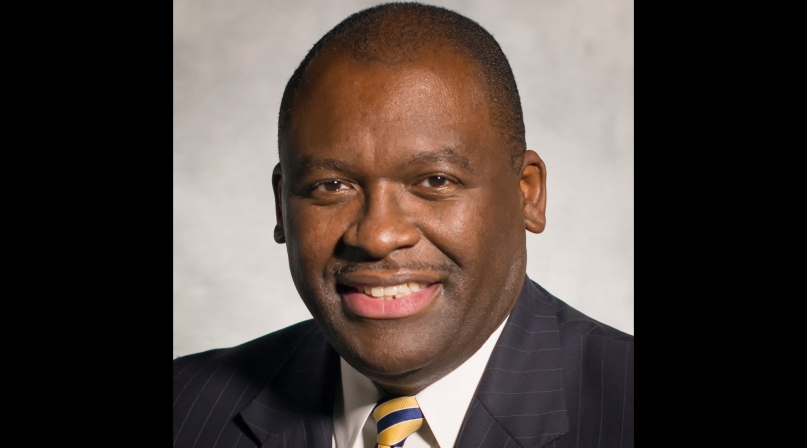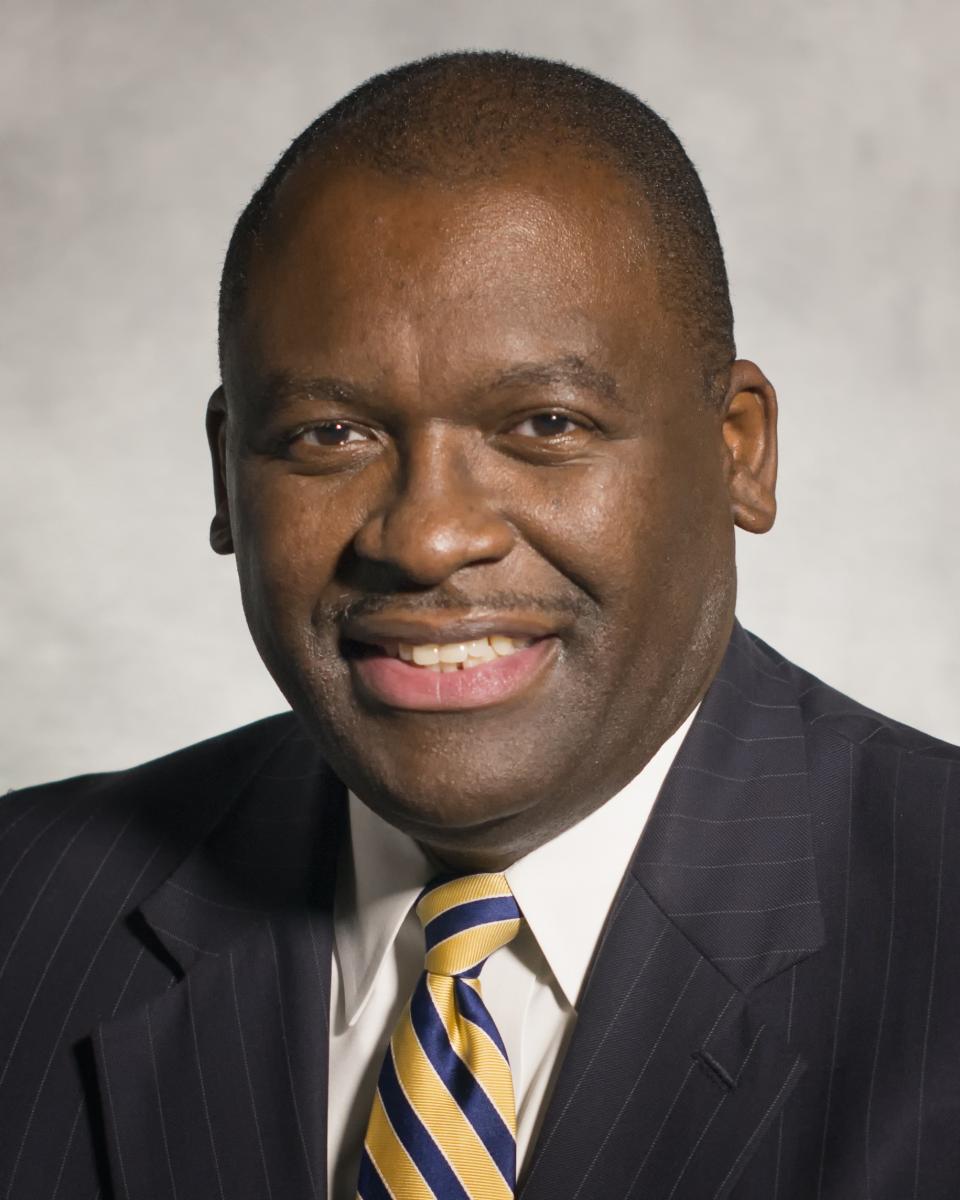Mecklenburg County maps path out of poverty
Upcoming Events
Related News

Trevor Fuller could not ignore signs that poor children's economic mobility in Mecklenburg County would be dramatically limited
A 2013 study by researchers at Harvard University and UC Berkeley ranked the Charlotte-Mecklenburg County area 50th out of 50 cities for economic mobility. The probability that a child born into the bottom fifth of incomes in Mecklenburg County will rise to the top fifth in his or her lifetime is just 4.4 percent, the study said. Word of the study coincided with a speech that then-Mecklenburg County Chair Trevor Fuller was to give on the state of the county.
County News spoke with Fuller about how the study inspired him to take action.
 When did you hear about the study? What was your reaction?
When did you hear about the study? What was your reaction?
Fuller: I had just been elected the chair of the county commission a short time before that and I was preparing my state of the county address and I think in October of 2013 is when the study came out, but it didn’t really hit us immediately. And so, after we started to hear about it, I said ‘Wait a minute, I can’t do this speech without talking about this.’
The speech I was planning to give was going to be extolling all the wonderful prosperity of Mecklenburg County, all over the seven municipalities, urban and rural settings. And I did do that, in the speech, I did do that, but I said, ‘I can’t finish this speech, without talking about this.’ And so, I called for creating a task force, and it took us awhile to get the right mix of folks together and all the other things it takes to put a task force together.
Did the study surprise you?
Fuller: Well, I don’t think so, if I’m honest. Thinking back to things that I’d seen and heard over the years. We kind of knew in the back of our minds, things would pop up we’d say ‘Oh this is a problem.’ And then we would go back to our regular…what the study did was it put it all together. ‘This is not good.’ So, it didn’t surprise, but it did open a lot of people’s eyes, putting it all together like that.
Was the reaction overall pretty positive when you said ‘Let’s put this task force together’?
Fuller: I think people understood immediately the challenge that was in front of us. In some ways, the fact that we were ranked 50 out of 50 of the top 50 cities was something that galvanized attention, because Charlotte doesn’t like to be last in anything. So, people, really...it has gone much further than I expected it to go. People latched on from all different corners of the community to say ‘Hey, look we want to be part of the solution to this problem.’
Can you talk about the purpose of the Charlotte-Mecklenburg Opportunity Task Force made up of community leaders that you advised starting?
Fuller: One was to find out why we were ranked 50 out of 50. The first was what is going on in Charlotte-Mecklenburg County that causes us to be this low on this list? The second was we want real-world evidence based solutions to address these issues. And on that first question when you look at the map of the country across the southeast United States. Why are we worse than any other place in the southeast? I wanted them to find answers to those questions.
Tell us about the Leading on Opportunity Task Force — what is its goal?
Fuller: Once the first task force report was issued, someone needed to take that and move forward. I suspect what will happen is the county will set out its map and each entity will do the same thing.
The mission of Leading on Opportunity is to convene and connect sectors across the community to implement the recommendations of the first task force to improve economic mobility in Charlotte and Mecklenburg County. As charged in the report, the organization will take a systemic approach to addressing the key determinants of early childhood education, college and career readiness, and family stability, while simultaneously focusing on the cross-cutting factors of segregation and social capital.
What about the “On the Table” discussions? Can you talk about those a little bit — their purpose and what came out of that?
Fuller: That was…a community-building initiative to engage the community in ways we have not engaged them before. I think engagement is important and too often part of the reason why we got where we are is because we haven’t had these conversations and decisions have been made over many decades that has led us where we are.
What does the timeframe to implement more of the goals look like?
Fuller: The Early Childhood Education Initiative I announced last year to make sure every child from birth to 5 has a quality education: It’s going to take us six years to slowly implement this in the way we’re thinking about. We think a large portion of it will be funded by tax revenue of some kind. In our state, we have a blue-ribbon commission that’s been formed by N.C. State (University), and we’re talking about local financing options for early childhood education.
Everybody needs to be in this conversation because we all need to contribute to this…it’s not going to be cheap. But the other way I see this is, look we’re paying for it anyway, right? We’re paying for it when kids don’t graduate from high school, we’re paying for folks who end up in our criminal justice system, we’re paying for it when people are repeating remedial courses in our community colleges. We’re paying for it. So, let’s pay it on the front side.
Will you be able to measure success with this endeavor to lift people up? Is there a way to measure what you’re doing?
Fuller: That’s what we’re trying to develop now. ‘What are the metrics? What do we need to see?’ Maybe for example, our rate of poverty, if we see that going down. Maybe that will be some indication. Educational outcomes, although those are hard to quantify, but if we start to see some results there. I think we need to have a robust metric to figure out whether we’re having success.
That really is the purpose of the Leading on Opportunity task force: to develop that set of metrics. What’s it going to look like? What do we need to see? We need some early wins to motivate people. Our third-grade reading scores right now they’re at 39 percent. We have an initiative to get that to 80 percent. Realistically that will take us about 10 years.
When you mentioned everybody has a role — the business community, the city, the county. Have you identified the role of the county?
Fuller: I’m about to present my proposal to the board on how Mecklenburg County would implement its part. We’ve gotten a report, and to cover all 4 year olds, we will need $70 million to $90 million. It sounds like a lot. and it is a lot, but if we can cut down on kids repeating grades, you save $22 million a year. Maybe it’s not so much.
The $70 million to $90 million — where would that come from?
Fuller: We’ve got two sources: Property taxes and we have the authority to raise the sales tax. Counties have a local option to increase the sales tax by one quarter of a penny through a county referendum. The ballot cannot stipulate specific uses for the sales tax, however, the Board of Commissioners could adopt a separate resolution stipulating how the revenue would be used. The Mecklenburg County Financial Services Department estimates that a 0.25 percent sales tax increase would yield about $50 million per year. So, you can kind of see it come together. If we think about it in a way, get it from this pot, get it from that pot, you can actually make it work.
This would be money to hire more teachers?
Fuller: I think we’re going to need about 200 more classrooms. We are also seeing this as economic development — pay the teachers, use some capital, do some upgrading. We’re looking at this to be done, to encourage the private sector to do it. The consensus is the county won’t be doing those services; we will make the money available to current schools, and provide the subsidy to existing preschools that would hire new teachers and bring on new children. The long and short of it is this is something we can absolutely get done.
What would you advise other counties looking to help children out of poverty?
Fuller: I do think it’s important to galvanize community opinion about it, because I think that’s what has allowed us to get to this point, that people say ‘You know what? You’re right, this is how we create a prosperous community.’
It has to be that we educate our children from the time they come out of the womb, we provide economic opportunity so people can actually support their families and raise their kids. Somebody has to drive the conversation, it doesn’t happen by itself. You’ve got to keep pushing it, keep talking about it, keep people engaged.
The task force cited segregation as a major problem. What are your thoughts?
Fuller: I give the task force great credit for pointing that out. Face it, a lot of these issues are tied to race. We are a county, for example, that is segregated by income and by race. Just from the county perspective, when we deliver services, we have very defined concentrated areas, not the whole county. It is still a difficult topic for us to talk about. But I’m encouraged that we’re talking about it — slowly, slowly but we are acknowledging it’s something we have to address.
A lot of the locations of the discussions are in places where people wouldn’t normally go. For example, in our community you could be working in uptown Charlotte and you go up and down Providence Road, one of our major arteries, get to your home in South Charlotte and never see, never see, the issues that are going on in West Charlotte. It’s out of your mind, not just out of your sight, but out of your mind.
So, if you meet over in the church in West Charlotte, maybe that might open your eyes a little bit.
How would you characterize this endeavor, that started four years ago, after the study came out?
Fuller: I’ve come to think about it as, what we’re talking about is reinvigorating the American Dream. That’s really what we’re talking about. If people are actually able to realize their potential because they’ve got an educational foundation and the ability to support themselves, it allows them to contribute.
Attachments
Related News

County Countdown – Dec. 15, 2025
Every other week, NACo's County Countdown reviews top federal policy advocacy items with an eye towards counties and the intergovernmental partnership.
Stretching small opioid settlement allocations helps funding do more
States and localities are set to receive $56 billion in opioid settlement dollars over an 18-year period, but not every county that receives settlement funding will get enough to build out infrastructure.